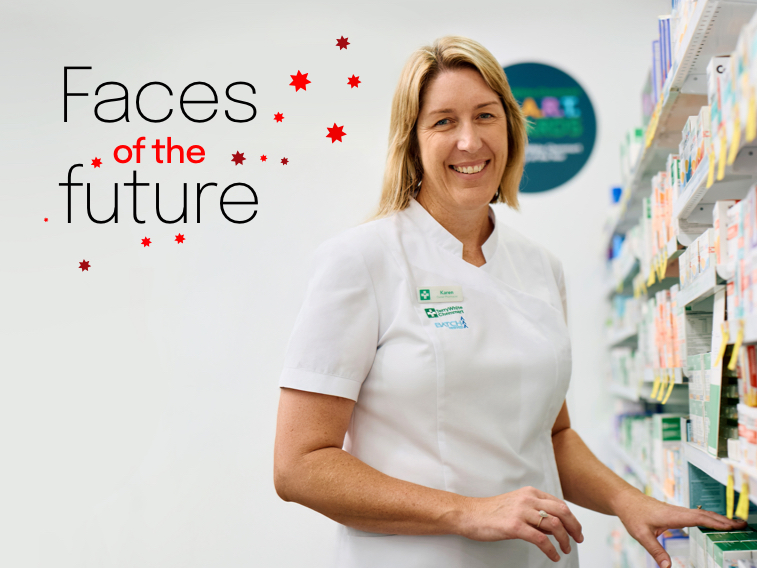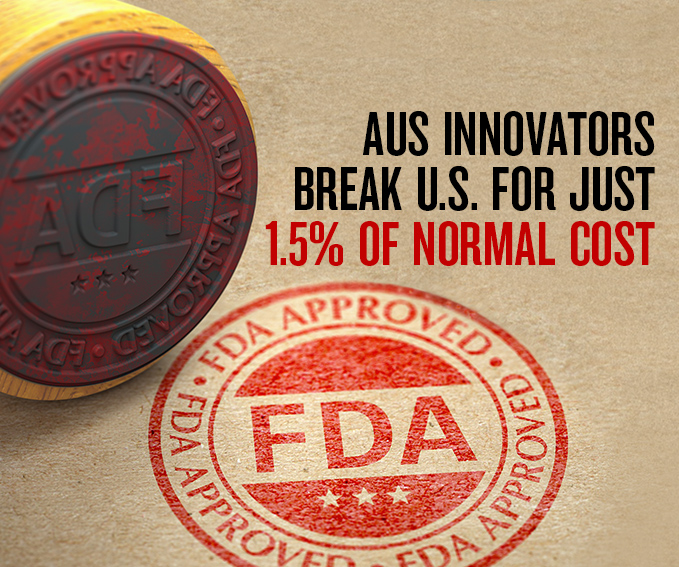Former professional netballer Karen Brown’s passion for scoring healthcare innovation goals has seen her continually break new ground.


Article
The story of a tiny surgical screw breaking into the US market is inspirational. Can other Australian healthcare entrepreneurs learn from its success?

The story of a tiny surgical screw working its way into the US market is inspirational. What can other Australian healthcare entrepreneurs learn from its success?
It isn’t often something so small makes such a big splash. But when Brisbane-based Field Orthopaedics launched its surgical micro screw in the US, then invoiced $900,000 of orders in a mere three weeks, people took notice.
For some, the real news was just how quickly and cheaply the product was cleared by the US Food and Drug Administration (FDA) – it took just 12 months and cost less than $600,000. To put this in context, a Stanford University study put the average FDA clearance time for medical devices in the screw’s risk category at 31 months, with an average cost of A$39 million.
Such high development costs can hinder innovation, in turn stopping Australian firms from entering the global health products market.
“As with every other sector, healthcare entrepreneurs are looking for a return on investment by getting their product to market ahead of their competitors,” says Andrew Loveridge, Customer Executive, Emerging Sectors, Business and Private Banking at NAB. “But, in healthcare, patient safety must always come first, so commercialisation walks a fine line between benefit and risk.”
So, can other innovators learn from Field Orthopaedics’s success and achieve faster, cheaper approvals? The answer is yes – and no. The regulation process itself leaves little wriggle room. However, the following five tactics could help you make the most of opportunities to get to market quicker and smoother.
Each jurisdiction has its own regulator and, according to Dr Lisette Pregelj, a lecturer in biotechnology at the University of Queensland (UQ) and a Postdoctoral Research Fellow at the Australian Institute for Business and Economics, for medical devices Europe was traditionally the first port of call. However, this has changed over time.
“Some companies will get their first approval in Australia or Europe,” she says, “though these days the US is a natural first target. It has the biggest share of the global market across medical technology, pharmaceuticals, biotechnology and other aspects of health. And, as it also has an excellent reputation in the industry, FDA clearance or approval is a really strong signal to the market that you have a good product.”
Field Orthopaedics benefited from what’s known as ‘market pull’ – they identified a gap in the market and set out to fill it. ‘Tech push’, where new technology is driving product development, has a less certain commercial outcome.
“Getting through the regulatory process is only half the battle,” Pregelj says. “The other half is getting the market to buy your innovation. That’s why it’s vital to think ahead to when your product will be ready for sale. The healthcare landscape may look vastly different in five or 10 years’ time and, depending on your device, it could take that long to complete the development and approval process.”
Field Orthopaedics has a growing team of doctors, engineers and scientists and the tagline Innovation through collaboration.
“It’s easy to see the importance of collaboration between government, academia and industry when you look at countries doing innovation particularly well,” says Loveridge. “I was recently in Israel, for example, and this connectivity is very obvious there. Companies are having to compete globally – to adapt and change in order to meet their clients’ needs – so I think it would also make sense to look beyond Australia for knowledge and inspiration.”
Pregelj agrees that entrepreneurs should think of collaboration on a global scale.
“The range of expertise required for the commercialisation journey is huge, all the way from manufacturing and marketing to regulatory,” she says. “Bringing it in as you need it can accelerate the process and you can find talent all over the world.”
To a large extent, time and cost depend on how your device is classified in terms of patient risk, says Pregelj.
“This ranges from the relatively low risk of Class 1 to Class 3 where patients could die or be severely impaired if the device didn’t work,” she explains. “The higher the risk, the greater the likelihood that you’ll need to run a clinical trial, which can take years to complete. The process is also much quicker and easier if you can demonstrate that your device is what’s described as ‘substantially equivalent’ to a product already cleared for sale in the US.”
Field Orthopaedics’ micro screw was classified low-to-moderate risk with no need for a clinical trial. It also passed the ‘substantially equivalent’ test, as it was a refinement of devices already on the market.
The latest NAB Australian Business Innovation Index 2019 found SMEs that rated themselves as having a ‘high’ culture of innovation were more likely to source their funding from all avenues than those who rated themselves ‘medium’ or ‘low’.
“In Australia you can get grants for basic research then, when you’re closer to market, you might get input from venture capital or private equity,” Pregelj says. “The middle stage, where you believe you have something that works but haven’t yet been able to demonstrate that, can be problematic. This is where lack of funding can be a real obstacle to successful innovation. At this point, global investment could help.”
Meanwhile, new forms of capital are becoming available.
“One example is a growing interest in crowd sourced funding, where a large number of investors get together to invest small amounts of money in support of start-ups and small businesses,” Loveridge says.
“Another is the Australian Business Growth Fund announced recently by the Australian Government. The four major banks, plus Macquarie and HSBC, will contribute capital to help innovative and fast-growing companies in all sectors navigate the process of getting their product to market more smoothly.”
© National Australia Bank Limited. ABN 12 004 044 937 AFSL and Australian Credit Licence 230686.